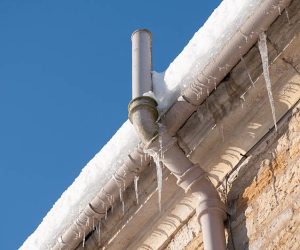Roofs are one of the most important structural elements of any building, providing protection from the elements and maintaining a comfortable indoor environment. Over time, however, roofs can develop issues due to weather exposure, wear and tear, or improper installation. Knowing the top repair solutions for common roofing problems can help homeowners and property managers address issues early, preventing more costly repairs or replacements. Below are some of the most effective solutions for common roof problems.

1. Repairing Flat Roof Leaks
Flat roofs are a popular choice for commercial buildings and modern homes, but they are particularly vulnerable to leaks. Water tends to pool on flat roofs if drainage isn’t adequate, increasing the likelihood of leaks and water damage. Regular inspections can help identify weak spots or small leaks before they become major issues. If you need to fix your flat roof due to leaks, there are several solutions available. For minor leaks, roofing sealants can be applied to damaged areas, creating a waterproof barrier that prevents further seepage.
For larger issues, a patching system involving roofing felt or fiberglass may be required. In cases where leaks persist, a professional roofer may suggest installing an additional membrane layer, which can provide added protection against water intrusion. In some instances, re-sloping the roof for improved drainage may be necessary to prevent future leaks.
2. Shingle Replacement for Damaged or Missing Shingles
Asphalt shingles are one of the most common roofing materials, known for their durability and affordability. However, they can crack, curl, or become loose due to weather exposure, high winds, or impact damage. Damaged or missing shingles not only diminish the aesthetic appeal of a roof but can also lead to leaks and water damage if left unattended.
The repair solution for damaged or missing shingles is straightforward: replace the affected shingles as soon as possible. Start by removing the damaged shingles and any nails or adhesives left behind. Clean the area and place new shingles, securing them with roofing nails and adhesive. It’s essential to match the new shingles to the existing ones to ensure a uniform look and maintain the roof’s integrity. For roofs with extensive shingle damage, it may be more cost-effective to consider a complete re-shingling of the affected section.
3. Fixing Roof Flashing Issues
Flashing is a crucial component of a roof that seals joints and prevents water from seeping into areas where the roof meets other structures, such as chimneys, vents, or skylights. Damaged or corroded flashing can lead to leaks around these vulnerable points, causing water damage to the underlying materials.
To repair flashing issues, inspect the area for signs of rust, cracks, or loose connections. In minor cases, caulking or roofing cement can be used to seal small gaps. For more severe damage, the damaged flashing should be removed and replaced with new flashing material, ensuring a watertight seal. Properly installed flashing is key to protecting the roof from leaks, especially in areas exposed to heavy rainfall or snow accumulation.
4. Repairing and Preventing Roof Ventilation Problems
Proper ventilation is essential for a healthy roof, as it helps regulate temperature and prevents moisture buildup in the attic. Poor ventilation can lead to issues such as mold growth, wood rot, and ice dams in colder climates. Inadequate ventilation can decrease the roof’s lifespan and result in higher energy costs.
Common roof ventilation problems can often be solved by installing additional vents, such as ridge vents, soffit vents, or gable vents, to improve airflow. If existing vents are blocked, clear away debris or insulation to restore proper ventilation. Ensuring adequate ventilation can prolong the roof’s life, prevent costly repairs, and improve indoor air quality.
5. Sealing Cracks in Roof Valleys
Roof valleys are the areas where two roof slopes meet, directing rainwater down into the gutters. These areas are prone to wear and tear due to the increased flow of water. Cracks in the valley or improperly installed valley flashing can result in leaks, which may cause damage to the roof deck or even the interior of the home.
Repairing roof valleys typically involves resealing or patching the affected area. Roofing cement or sealant can be applied to small cracks to create a watertight barrier. In cases of significant damage, it may be necessary to replace the valley flashing entirely. By regularly inspecting roof valleys and addressing cracks promptly, homeowners can prevent water from penetrating the roof structure.
6. Repairing Gutter Problems and Preventing Water Damage
Gutters are an integral part of a roofing system, directing water away from the building’s foundation. However, clogged or damaged gutters can cause water to back up, leading to roof leaks and water damage to both the roof and the building’s exterior. Cleaning the gutters regularly is essential for preventing these issues.
If gutters are sagging, repair may involve tightening or replacing the gutter brackets. For gutters with leaks or rust, consider applying a sealant or replacing the damaged section. In some cases, installing gutter guards can help prevent clogging by keeping leaves and debris out of the gutters, ensuring that water flows freely off the roof.

Maintaining a healthy roof requires proactive care and timely repairs to address common issues. From fixing flat roof leaks to replacing damaged shingles and maintaining proper ventilation, these solutions can extend the life of your roof and prevent costly repairs. For best results, consider scheduling regular roof inspections to catch problems early and ensure your roof remains in optimal condition.



